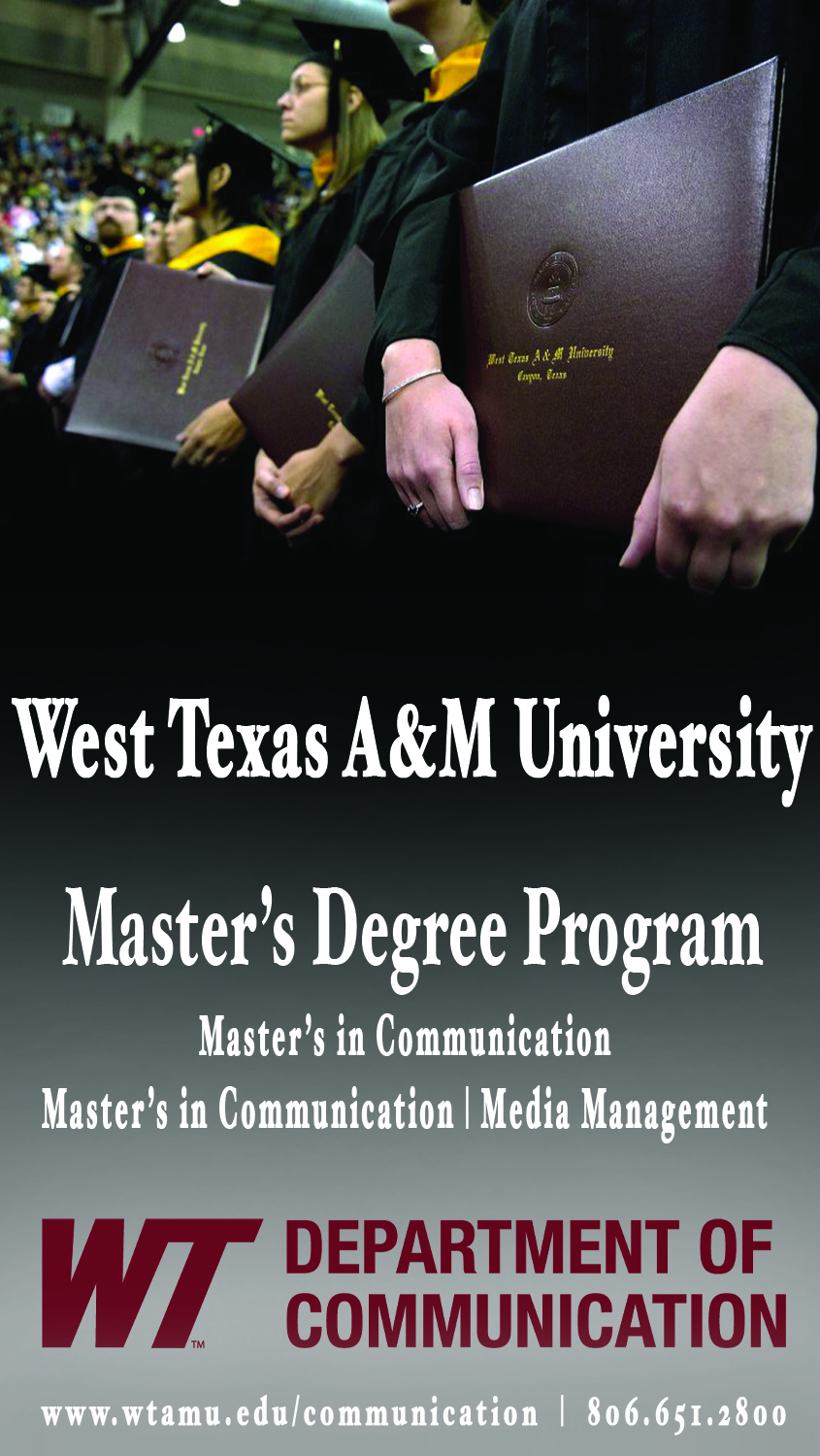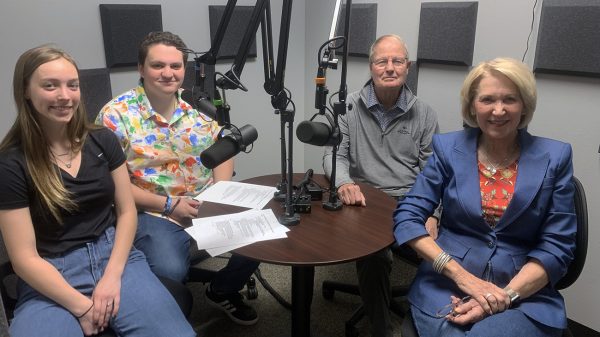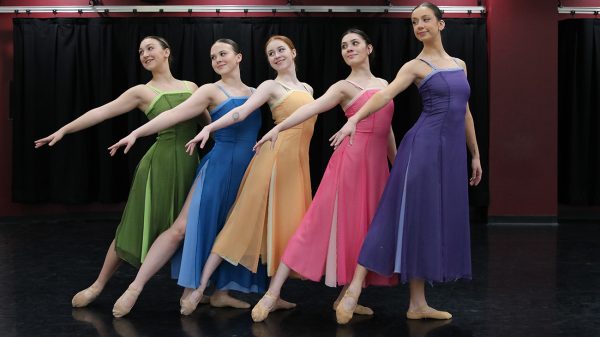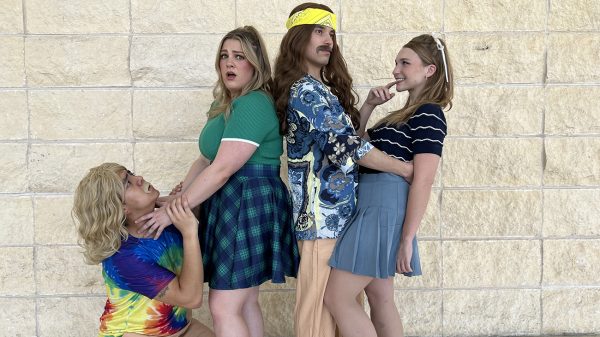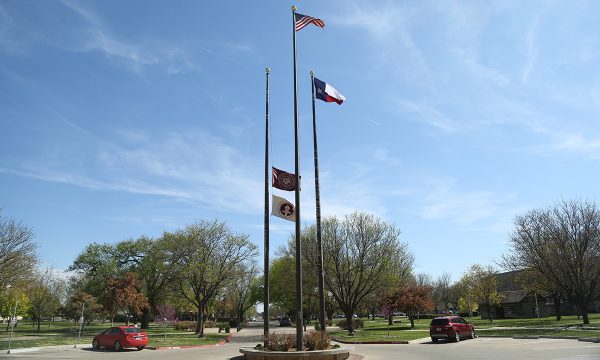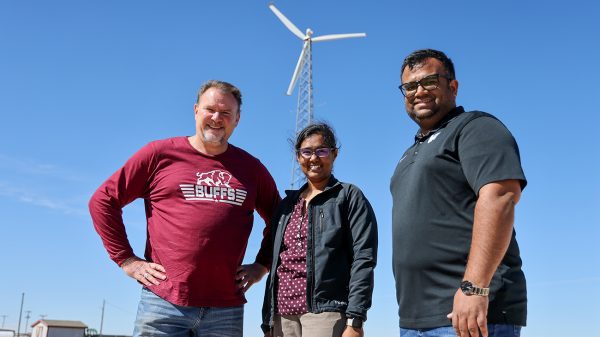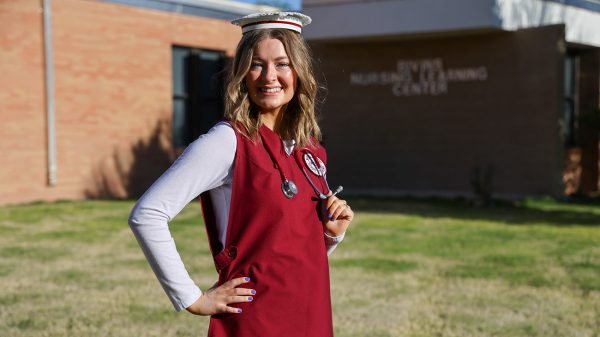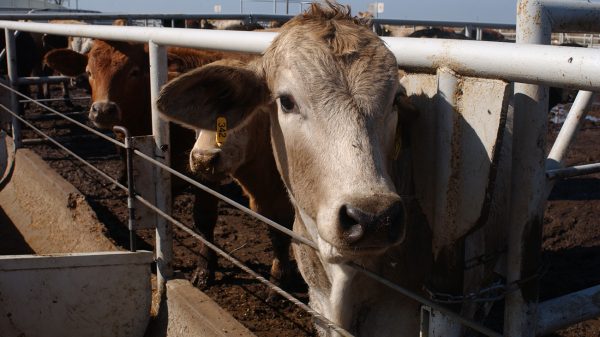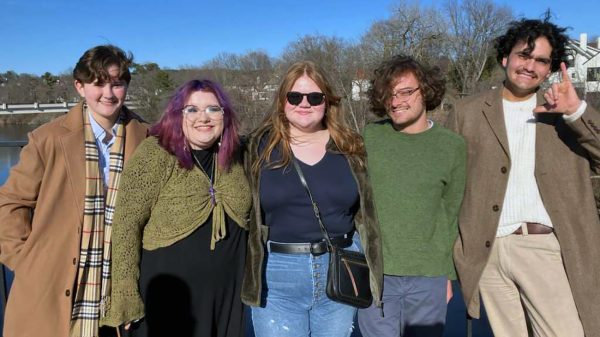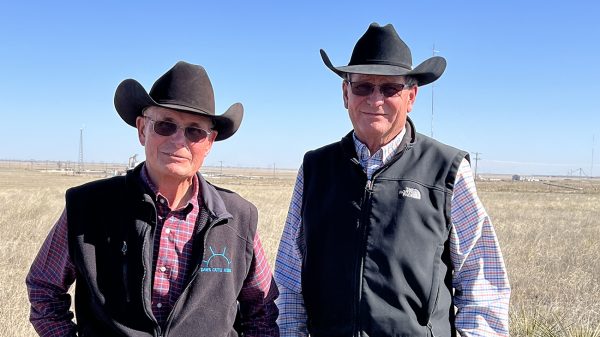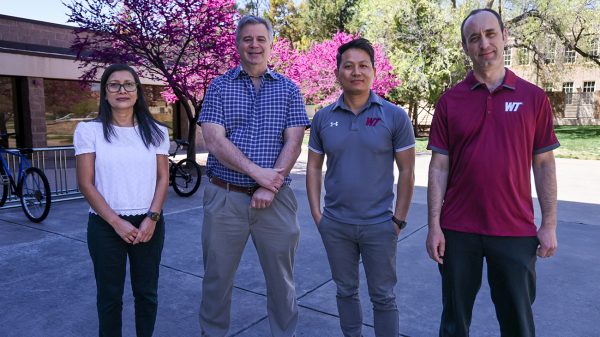WT Students Make Important Progress in Becoming Researchers
October 8, 2021
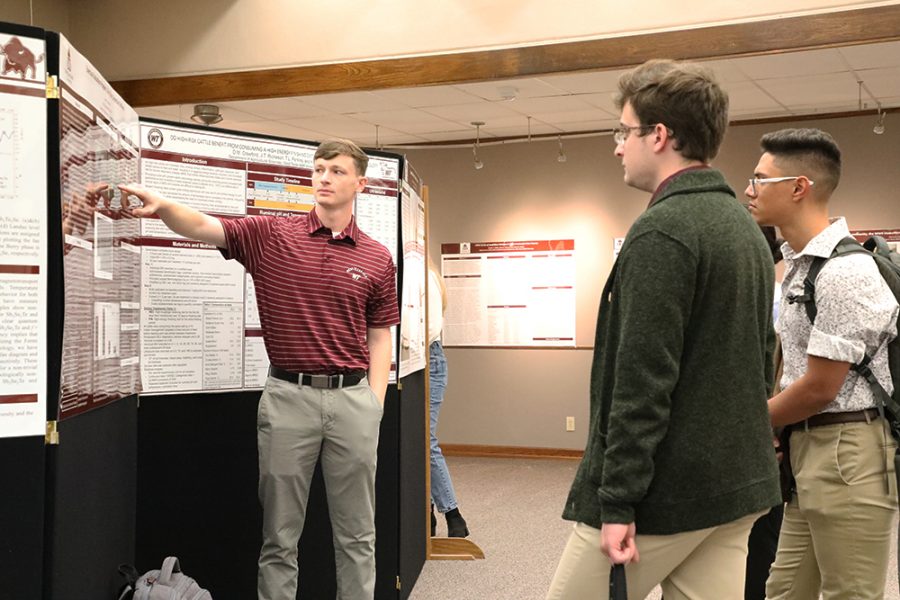
Copy by Chip Chandler, 806-651-2124, [email protected]
CANYON, Texas — More than two dozen West Texas A&M University students took their first steps toward becoming researchers this week.
Twenty-eight undergraduate and graduate students took part in the annual internal grant poster presentation, held Oct. 5 by WT’s Graduate School in Cornette Library.
This year’s annual student research poster session included the graduate student research posters and the President’s undergraduate research posters from both the 2019-20 and 2020-21 academic years. The poster presentation is the end of a process that begins with the submission of a grant proposal. Once approved, students conduct research and present their findings in the poster session.
The presentation is an important learning opportunity for students as WT continues to solidify its standing as a regional research university, the mission laid out in the University’s long-term plan, WT 125: From the Panhandle to the World. That plan is being fueled by the historic, $125 million One Westcomprehensive fundraising campaign.
“This is the first step in learning to conduct research,” said Teresa Clemons, director of Sponsored Research Services. “After completing an internal grant, a student will have the knowledge of how to write a proposal for external funding and how to manage and administer grand funds.”
Research topics include genetic mutations, exercise techniques, wind turbines, pesticides and Covid-19’s effect on labor issues.
Recipients of the Graduate Student Research Grants and their topics include:
- Rita Bahlibi, graduate student in finance and economics from Aurora, Colo.: “The Economics of Electricity in East Africa”;
- Lucas Castro, graduate student in biology from Canyon: “Habitat Use by Mammals in the Northwest Texas Panhandle”;
- David Crawford, graduate student in agriculture from Tolono, Ill.: “Do High-Risk Cattle Benefit from Consuming a High-Energy Finishing Diet Immediately Upon Arrival to the Feedlot?”
- Juliet Ellison, graduate student in biology from Canyon: “Circadian Regulation of Peripheral Serotonin in Mice under Constant Darkness”;
- Jessica Heckman, graduate student in biology from Canyon: “Genetic Evaluation of South Texas Sirens”;
- Derek Kennedy, graduate student in sports and exercise sciences from Canyon: “Electromyographic Comparison of the Barbell Hip Thrust and Barbell Glute Bridge”;
- Megan Miller, graduate student in biology from Cleburne: “Prevalence of Coxiella Burnetii in Bovine of the Texas Panhandle”;
- Hunter Todd, graduate student in biology from Hurst: “Relationship Between Microbiome and Pathogen Occurrence in Amphibians of New Mexico”;
- Hannah Tripp, graduate student in environmental science from King George, Va.: “Satellite-Derived Variations in West Texas Playa Wetlands”;
- Hemanth Vepuri, graduate student in environmental science from Koduru, India: “Biological Analysis of Ice-Nucleating Particles in Precipitation Samples from Canyon”;
- Ellis Vidmar, graduate student in agriculture from Hot Sulphur Spring, Colo.: “Analyzing Consumers Visual Attention While Assessing Specialty Beef Labeling”;
- David Walden, graduate student in mathematics from Amarillo: “Collection of Heat Losses in Industrial Processes Using Peltier Modules”; and
- Michaela Wegman, graduate student in history from Canyon: “Community, the WWII Homefront, and Art: POW Camps in Texas.”
Recipients of the President’s Undergraduate Student Research Grants and their topics include:
- Cheyenne Birdsong, a senior psychology student from Midland: “Segmenting Lecture Videos: Benefiting High- and Low-Expert Learners”;
- Calvin Burns, a senior civil engineering student from Canyon: “Fault Detection for Wind Turbine Gearboxes”;
- Paige Clements, a senior English student from Amarillo: “Curiouser and Curiouser: Exploring Wonderland’s Dreamscape in Adaptation”;
- Lance Fletcher, a senior computer science student from Clovis, N.M.: “Exercise Optimization and Correction through Virtual Body Construction”;
- Yidi Hou, a senior environmental science student from Dong Nai, Vietnam: “Characterization of Physicochemical Properties of Feedlot Dust Ice Crystal Residuals (ICRs)”;
- Billy Lee, a senior biochemistry student from Belton: “Circadian Regulation of Serotonin: Analysis of Murine Fecal Samples”;
- Duncan Miertschin, a senior physics student from Amarillo: “Magnetotransort Studies in Sb2TE2Se and Sb2Se2TE Topological Systems”;
- Shelby Morton, a senior biochemistry student from Amarillo: “Genetic Mutations Producing Polymyxin B Resistance in Pseudomonas Aeruginosa”;
- Dan Nguyen, a senior mechanical engineering student from Da Nang, Vietnam: “Miniature Windmill with Real-Time Data Acquisition for Optimum Wind Turbine Location”;
- Thinh Nguyen, a senior chemistry student from Da Nang, Vietnam: “Developing the Delta Mode System for Electrical Transport Measurements”;
- Yanai Otero, a senior industrial and organizational psychology student from Killeen: “The Impact of Covid-19 on Employee Attitudes and Turnover”;
- Jarrett Toland, a senior biology student from Lubbock: “Effects of Resveratrol on Ganglioside and GD3S in Glioblastomas”;
- Jason Velasquez, a senior environmental science student from Pampa: “Testing the Tectonic Significance of the Moore Gulch Fault Zone”; and
- Zhicheng Liu, a senior environmental engineering student from Beijing, China: “Testing Vegetables and Fruits for Pesticide Residuals.”
About West Texas A&M University
WT is located in Canyon, Texas, on a 342-acre residential campus. Established in 1910, the University has been part of The Texas A&M University System since 1990. WT, a Hispanic Serving Institution since 2016, boasts an enrollment of about 10,000 and offers 60 undergraduate degree programs, 40 master’s degrees and two doctoral degrees. The University is also home to the Panhandle-Plains Historical Museum, the largest history museum in the state and the home of one of the Southwest’s finest art collections. The Buffaloes are a member of the NCAA Division II Lone Star Conference and offers 14 men’s and women’s athletics programs.



